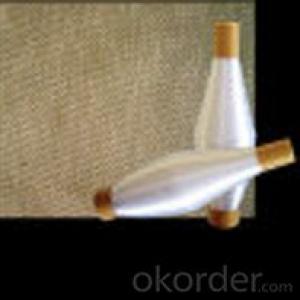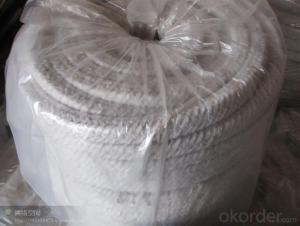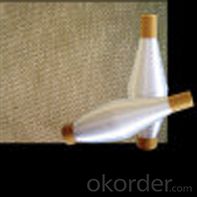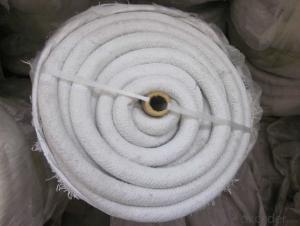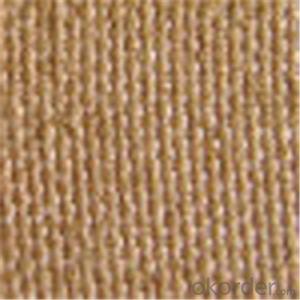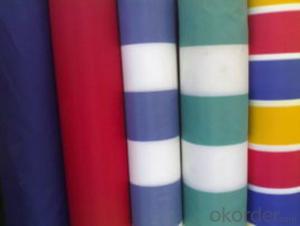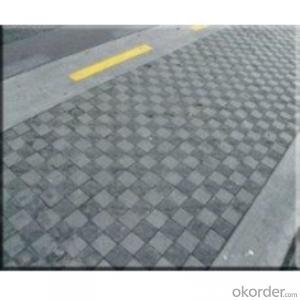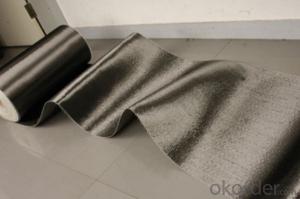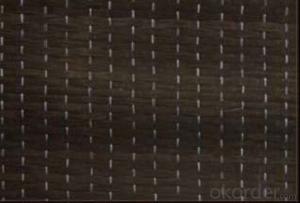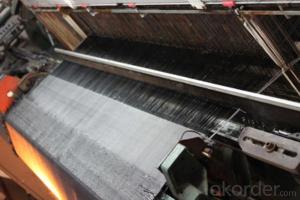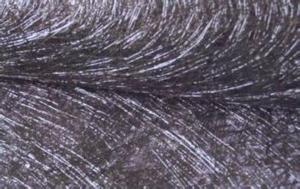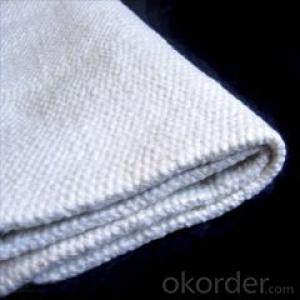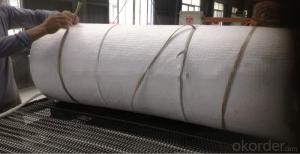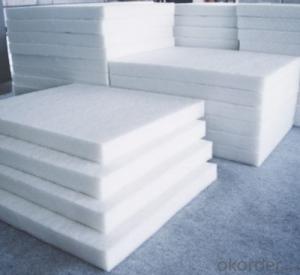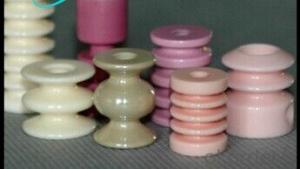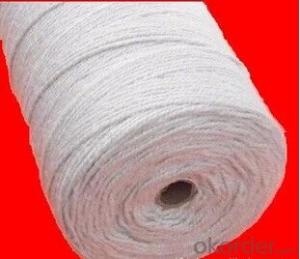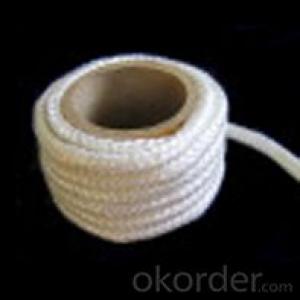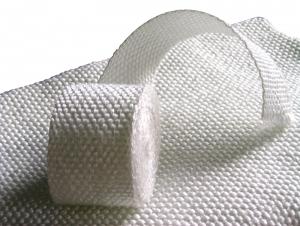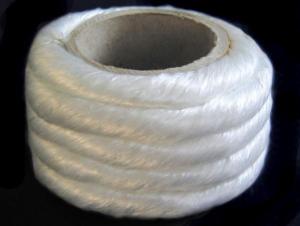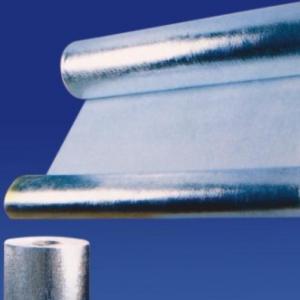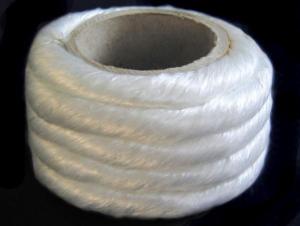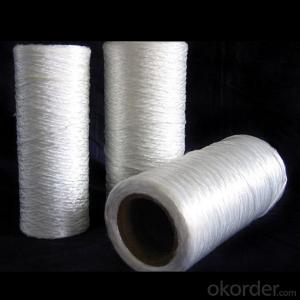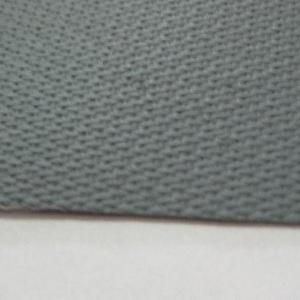Glass Fiber Textiles Heat Insulation Ceramic Fiber Textile
- Loading Port:
- Shanghai
- Payment Terms:
- TT OR LC
- Min Order Qty:
- 10 m.t.
- Supply Capability:
- 100 m.t./month
OKorder Service Pledge
OKorder Financial Service
You Might Also Like
Quick Details
| Type: | Twisted Rope | Application: | Heat Insulation | Thickness: | 4-60mm |
| Width: | 4-60mm | Length: | 30m | Grade: | HA (High Aluminum) |
| Chemical Composition: | AL2O3+SIO2 | Ultimate Strength (≥ MPa): | 0.04 | Working Temperature: | 1260 |
| Fiber Diameter: | 2-5um | Thermal Conductivity: | 0.075-0.175 w/m.k | Shrinkage (1800℉, 3h): | <=-3 |
| Place of Origin: | China (Mainland) | Brand Name: | Model Number: | HA-ceramic fiber rope | |
| Color: | White |
Packaging & Delivery
| Packaging Detail: | carton with inner plastic bag |
| Delivery Detail: | 15days after receiving advance payment |
Specifications
Heat Insulation high temperature ceramic fiber textile
professional factory
ceramic round/square/twisted rope
MSDS ISO9001
Heat Insulation Ceramic Fiber Rope
About Ceramic Fiber Rope
Iterm | Ceramic fiber rope |
Type | Ceramic fiber twisted rope |
Ceramic fiber square braided rope | |
Ceramic fiber round braided rope | |
Characteristics | ** Good thermal insulation |
** Excellent high temperature strength | |
** Good electrical insulation properties | |
** High chemical stability | |
** Low thermal conductivity | |
Typical Use | Hightemperature pipe insulation and seal, cable insulationcoating, flexible expansion joint connection,coke oven opening seal |
MOQ | 1m |
FOB Price | 4-6.5 USD/KG |
Port | Qingdao |
Payment Terms | L/C, D/A, D/P, T/T |
Packing | Carton with inner plastic bags |
Delivery | Within 15 days after delivery deposit |
Certificate | ISO9001, MSDS |
- Q: How are glass fiber textiles used in the electronics industry?
- Glass fiber textiles are used in the electronics industry for various applications, primarily for thermal management and insulation purposes. They are commonly used as reinforcements in printed circuit boards (PCBs) and as insulating materials in electrical cables and wires. Glass fiber textiles help in improving the mechanical strength and durability of electronic components, while also providing electrical insulation and heat resistance, making them essential for the efficient functioning and longevity of electronic devices.
- Q: Are glass fiber textiles suitable for outdoor use?
- Yes, glass fiber textiles are suitable for outdoor use. Glass fibers are known for their high tensile strength and resistance to harsh weather conditions, making them an excellent choice for outdoor applications. Glass fiber textiles are often used in outdoor furniture, awnings, canopies, and other outdoor structures. They are resistant to UV radiation, moisture, and temperature changes, ensuring their durability and longevity in outdoor environments. Additionally, glass fiber textiles are lightweight, easy to maintain, and have good dimensional stability, making them a practical choice for outdoor use.
- Q: How do glass fiber textiles absorb or repel moisture?
- Glass fiber textiles are hydrophobic, meaning they repel moisture. This is because the smooth surface of glass fibers does not allow water molecules to penetrate or be absorbed into the fabric. As a result, moisture simply beads up on the surface of the textile and rolls off, keeping the fabric dry.
- Q: How do glass fiber textiles contribute to oil resistance?
- Oil resistance is achieved through various mechanisms when using glass fiber textiles. Firstly, glass fibers possess a high resistance to chemical degradation, rendering them less susceptible to the corrosive impact of oil. As a result, the textile remains intact and durable even after prolonged exposure to oil. Moreover, glass fibers exhibit a low affinity for oil, meaning that they do not readily absorb or retain it upon contact. This characteristic prevents oil from infiltrating the textile and causing saturation or weakening. Instead, oil tends to form droplets or slide off the surface of the glass fiber textile, minimizing the likelihood of seepage or leakage. Furthermore, glass fiber textiles often undergo treatment with specialized coatings or finishes that enhance their resistance to oil. These treatments further repel oil, augmenting the textile's ability to resist absorption or permeation. The coatings also serve as a barrier, preventing oil from reaching the underlying layers of the textile and compromising its structural integrity. In conclusion, glass fiber textiles offer a remarkable combination of chemical resistance, low oil absorption, and enhanced coatings, all of which contribute to their excellent oil resistance. Consequently, they are a suitable choice for applications requiring protection against oil, such as the manufacturing of oil-resistant clothing, filtration systems, or industrial equipment.
- Q: Can glass fiber textile be used in automotive interiors?
- Yes, glass fiber textile can be used in automotive interiors. It is commonly used for various components such as seat covers, headliners, door panels, and trunk linings. Glass fiber textiles provide durability, heat resistance, and sound insulation properties, making them suitable for automotive applications.
- Q: How to make a fishing boat with fiberglass cloth?
- If you use it, do not pay attention to too much, there is probably a can, in the mold to pull out the line on the line.
- Q: Can glass fiber textiles be used in carpeting?
- Yes, glass fiber textiles can be used in carpeting. Glass fiber textiles, also known as fiberglass, have excellent thermal and chemical resistance properties, making them a suitable material for a wide range of applications including carpeting. Glass fiber textiles can provide added strength and durability to carpets, improving their overall performance and longevity. Additionally, glass fiber textiles can also enhance the carpet's resistance to stains, moisture, and wear and tear. Furthermore, these textiles can contribute to better insulation and soundproofing in carpeted areas. Overall, glass fiber textiles offer several benefits that make them a viable option for use in carpeting.
- Q: Can glass fiber textiles be knit?
- No, glass fiber textiles cannot be knit as they are made from inorganic materials and lack the flexibility required for the knitting process.
- Q: Is glass fiber textile breathable?
- No, glass fiber textile is not breathable.
- Q: What are the different surface treatments available for glass fiber textiles?
- Glass fiber textiles offer a range of surface treatments, each serving a specific purpose and providing unique advantages. Some of the most commonly used treatments include: 1. Sizing: During the manufacturing process, a protective coating known as sizing is applied to the glass fibers. This coating enhances the textile's handling and processing characteristics, ensuring better control and stability during weaving or knitting. 2. Silane treatment: By applying a silane coupling agent to the glass fibers, the adhesion between the fibers and various resin systems, such as epoxy or polyester, is improved. This treatment enhances the overall strength and durability of the composite material. 3. Coating: Coating involves applying a layer of protective material, such as acrylic, polyurethane, or silicone, to the glass fiber textile. This adds additional properties like water resistance, UV resistance, or flame retardancy. 4. Laminating: A layer of film or fabric is bonded to the surface of the glass fiber textile in the laminating process. This treatment provides extra strength, stiffness, or decorative effects to the textile, as well as improved resistance to chemicals or abrasion. 5. Dyeing or printing: Dyes or pigments can be used to add color or patterns to glass fiber textiles. Dyeing can be done during manufacturing, while printing involves applying color or designs onto the textile's surface. These treatments enhance the textile's aesthetic appeal and visual appeal. In summary, the various surface treatments available for glass fiber textiles aim to enhance their performance, durability, and appearance. The choice of treatment depends on the specific properties and application requirements of the textile in question.
Send your message to us
Glass Fiber Textiles Heat Insulation Ceramic Fiber Textile
- Loading Port:
- Shanghai
- Payment Terms:
- TT OR LC
- Min Order Qty:
- 10 m.t.
- Supply Capability:
- 100 m.t./month
OKorder Service Pledge
OKorder Financial Service
Similar products
Hot products
Hot Searches
Related keywords
